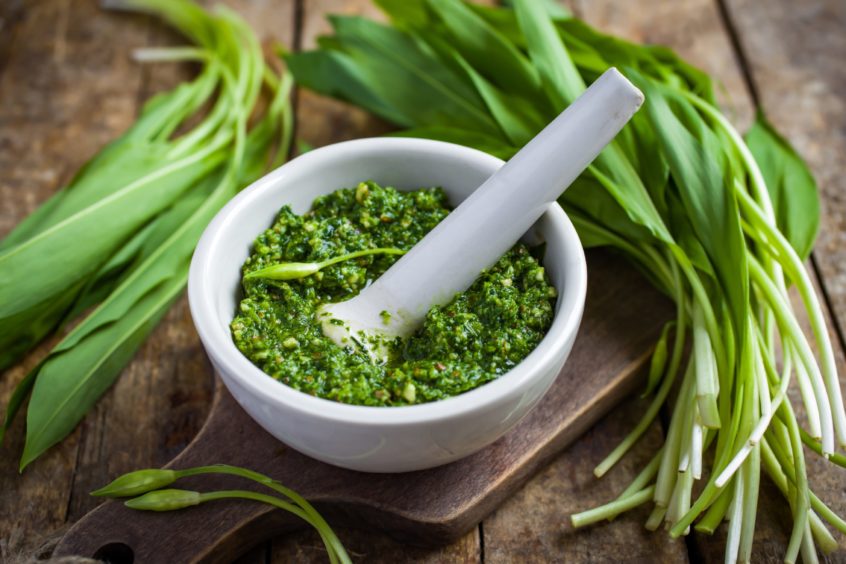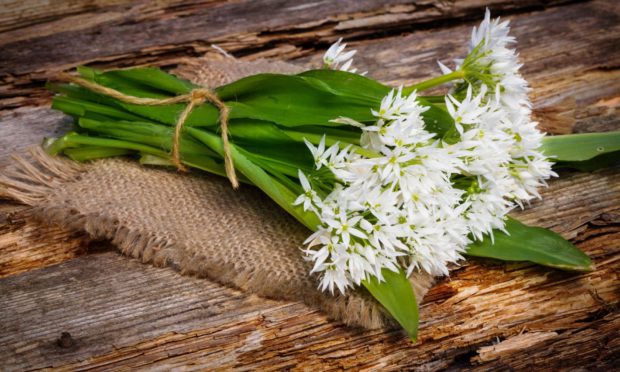Stephen King, executive chef at Uisge restaurant and bar in Murthly, gives his recipe for a pesto using a plant you might find while out on a walk.
With the nicer weather we are all looking for different places to enjoy wandering along, so why not find a nice woodland or river walk?
While out enjoying the wonderful countryside keep an eye (and a nose) out for wild garlic – more often than not on a calm day you will smell it before you see it.
Wild garlic will normally be found in shaded woodland areas or along a riverbank and will grow in high volume, creating a green blanket effect.
This time of year is normally the best for harvesting the long, green leaf as the flower doesn’t tend to appear until April through to June.
The leaves are at their best when the plant is young, and have a lighter, more mellow taste than the bulb we would normally use. The white flower is also edible and has a slightly more pungent taste and is great for garnishing light summer salads or soups.
Wild garlic can be used raw or cooked. Only cook it for a few minutes, normally at the end of cooking.
I prefer to use the leaves raw and add them through salads or sprinkled over a finished dish as garnish.
One of my favourite ways to use the leaves is through a lovely fresh pesto. This also helps to keep it longer; it can be stored in a sealed jar in the fridge for up to two weeks. Use it as a salad dressing or soup garnish, or it’s fantastic tossed through most fresh pasta dishes. Here is a simple vibrant recipe for wild garlic pesto.

You will need: 250g washed wild parsley leaves; 50g walnuts; 50g pine kernels; 100g finely grated Parmesan; 1 lemon zest an juice; approximately 150ml olive oil; salt and pepper to taste.
Firstly gently toast the walnuts and pine kernels in a dry pan over a medium low heat or under the grill until slightly browned and giving off a lovely nutty smell. Roughly chop them and leave them to cool before using them.
Add all ingredients, apart from the olive oil, to a food processor or a jug with a stick blender and blitz for roughly one minute until it’s quite a thick, rough paste. Then start gradually adding the olive oil until you get the consistency you want. It should be well blitzed and fairly loose but not too oily as a finished product.
Use it straight away or decant into a sealed container and store in the fridge.

